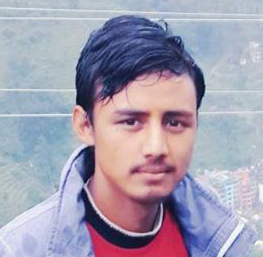Bagmati Province
Residents of remote Sindhupalchok villages living without basic facilities
Dipu, Tega and Tembathan villages are cut off from even the most basic facilities such as roads, electricity, health services and schools.
Anish Tiwari
Yangzi Sherpa of Tembathan in Jugal Rural Municipality, Sindhupalchok, had to take a loan of Rs 200,000 to charter a helicopter to bring her pregnant daughter-in-law to Kathmandu for treatment.
“It’s been months since I took the loan but I still haven’t been able to pay back,” said the 63-year-old. “I had to take a loan since I don’t make much money by herding cattle.”
Dipu, Tega and Tembathan villages in the rural municipality are just 110 kilometres from Kathmandu but the villages are cut off from even the most basic facilities such as roads, electricity, health services and schools. The residents of these villages have to live under difficult circumstances for a lack of connectivity and resources.
“Everyone who visits Dipu, Tega and Tembathan can’t comprehend how cut off these villages are,” said Saila Sherpa, another local resident of Tembathan. “We have been waiting for development to reach our villages. For those living in Tembathan, a journey to Dipu and Tega is at least a day’s walk.
There are 220 families living in Dipu, Tega and Tembathan villages.
“Local residents have to walk for two days to reach the Gumbathan Community Unit in Pangarpu to get treatment for minor ailments and get medicine and vaccination. Pregnant and postpartum women and other sick people have to rely on helicopters for a chance to receive treatment,” Saila said.
A majority of the children in Dipu, Tega and Tembathan are deprived of immunisation. Pregnant women and postpartum women also have to reach Pangarpu for essential health services, said Durgadatta Chapagain, senior public health officer in the District Health Office.
“It is difficult to reach these villages due to their geographical remoteness,” he said.
Due to a lack of road facilities, the villagers have to sell their properties or take loans to charter a helicopter during medical emergencies. Their agriculture products—potatoes, radish and barley, among other crops—also have no market.
“We cannot sell our agricultural produce in the market, as there’s no road to transport our products. We would not have to spend so much money on helicopters if our village was connected to the road network,” said Yangzi.
Mingmar Sherpa, a local resident of Tembathan, is 29 years old. A daily wage worker, he has studied only up to grade five in Tembathan Basic School.
“There’s no secondary school in our village. That is why I could not continue with my studies. We have to walk for at least five hours to reach Gumbathan-based higher level schools,” he said.
According to the local unit, most of the youths in Tembathan are daily wage workers in Kathmandu and some have gone overseas in search of employment.
The villagers also have to rely on kerosene lamps during night, as the settlements do not have electricity connection, said Mingmar Lama, 34, of Tembathan.
Meanwhile, the people’s representatives in Jugal Rural Municipality claim that they are taking initiatives to launch development projects in Dipu, Tega and Tembathan areas.
“We have invited a tender to construct a five-kilometre road from Nesham Khola to Tembathan at a cost of Rs 20million. Nesham Khola is already connected to the road network. Now, we are going to extend the road to Tembathan,” said Hom Narayan Shrestha, chairman of the rural municipality.
“We have also recently established a health unit in Tembathan with an Auxiliary Nurse Midwife and a health worker. It is equipped to provide treatment for minor ailments,” said Shrestha. “We also plan to upgrade the basic school up to secondary level.”
But the villagers are sceptical of the assurances provided by the people’s representatives.
“They always make promises of developing the area but they never do anything,” said 65-year-old Num Maya Sherpa of Tembathan.




 13.12°C Kathmandu
13.12°C Kathmandu











